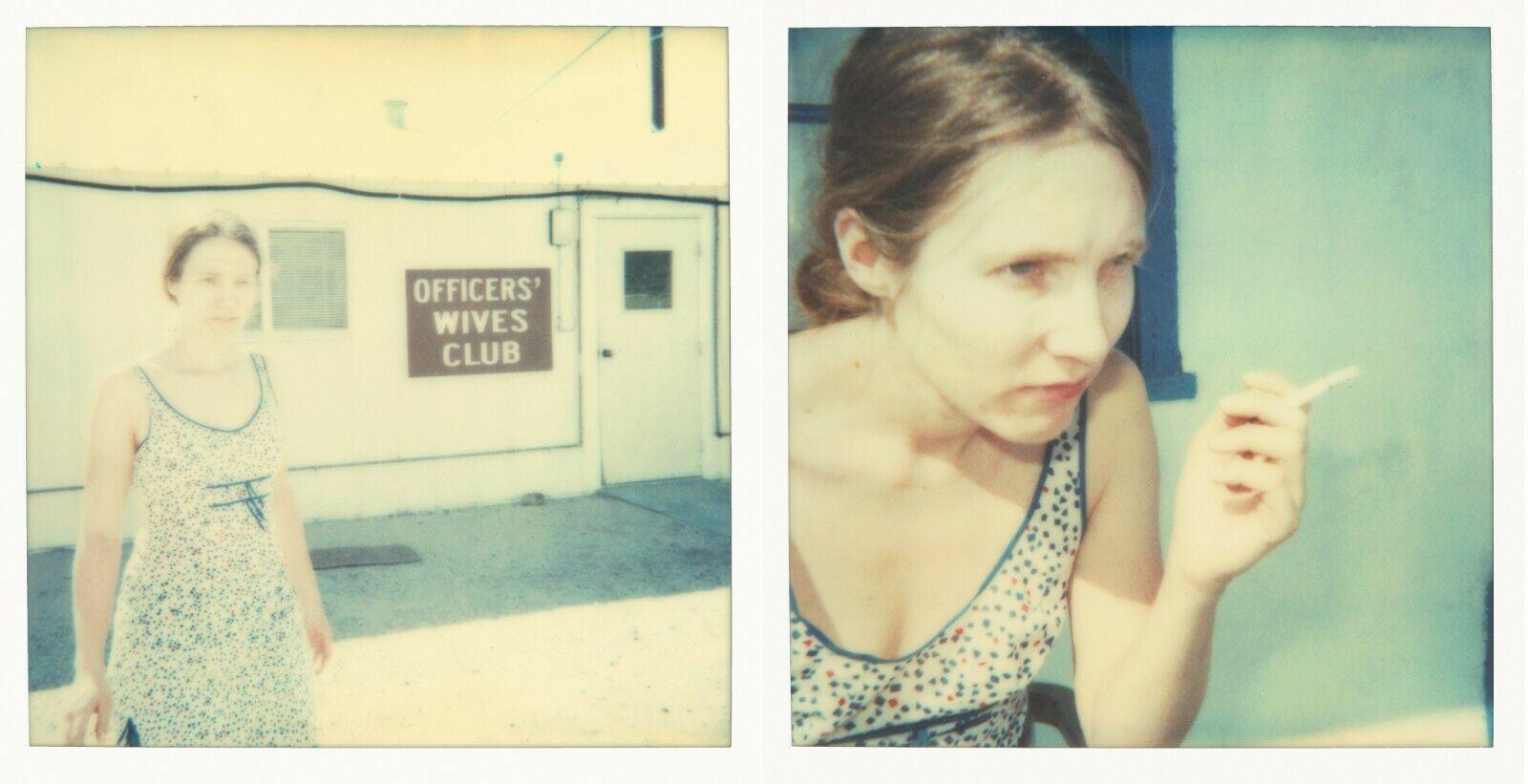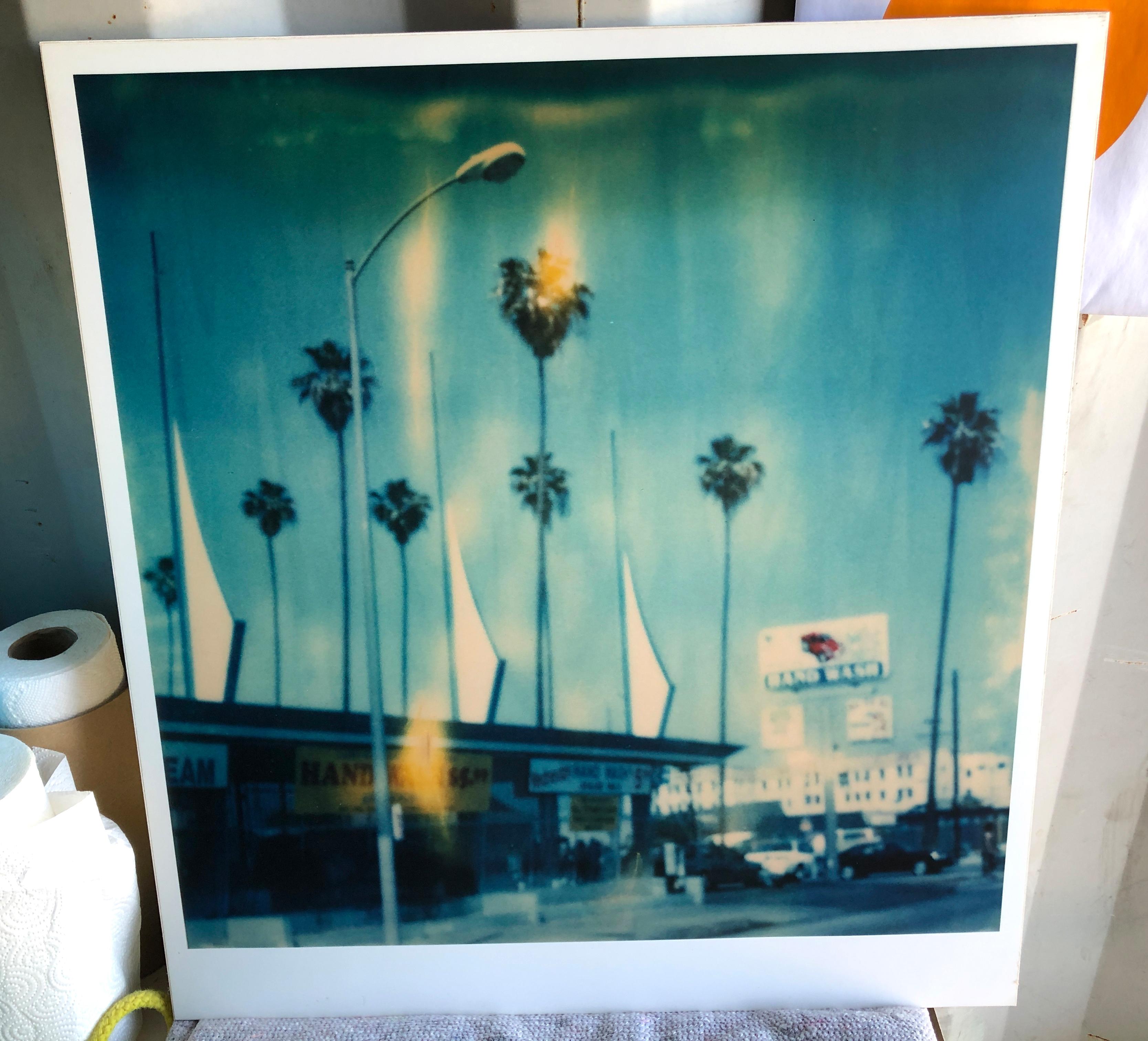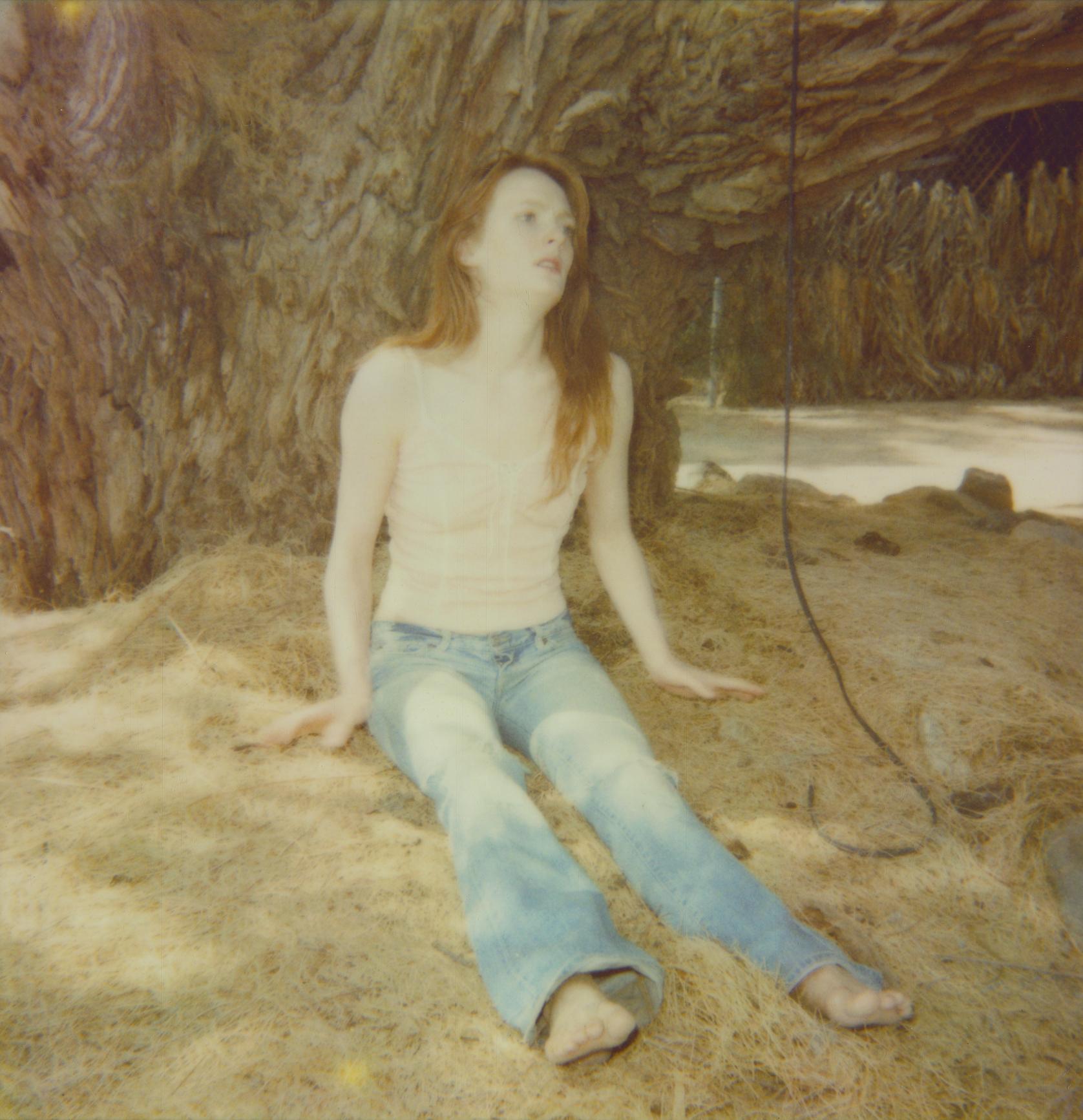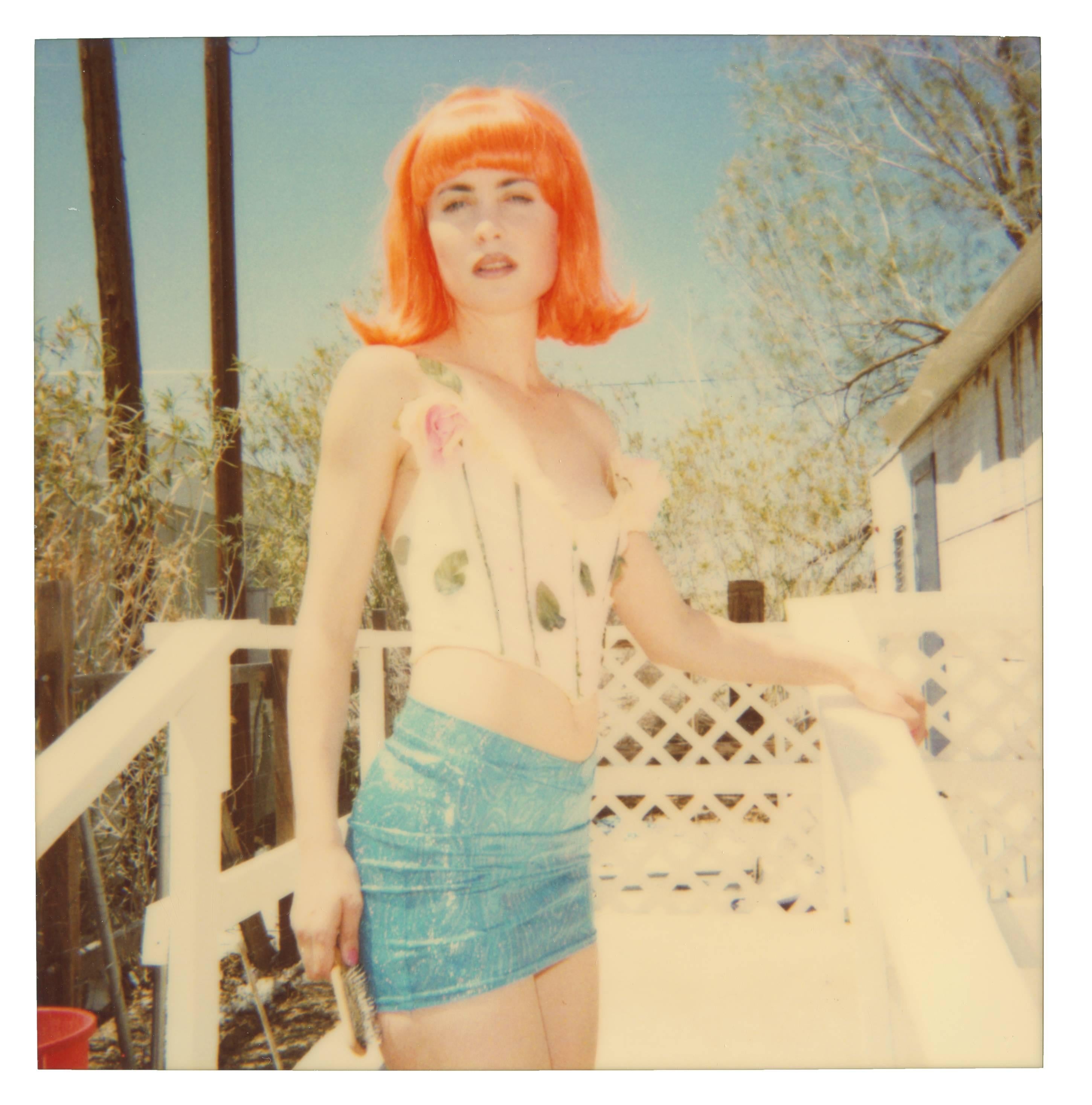Stefanie SchneiderAimless (Wastelands), triptych, analog - Polaroid, 21st Century, Color2003
2003
About the Item
- Creator:Stefanie Schneider (1968, German)
- Creation Year:2003
- Dimensions:Height: 22.45 in (57 cm)Width: 70.87 in (180 cm)Depth: 0.04 in (1 mm)
- Medium:
- Movement & Style:
- Period:
- Condition:
- Gallery Location:Morongo Valley, CA
- Reference Number:1stDibs: LU652310292342
Stefanie Schneider
- ShippingRetrieving quote...Ships From: morongo valley, CA
- Return PolicyA return for this item may be initiated within 7 days of delivery.
- Officer's Wives Club - Contemporary, 21st Century, Polaroid, FigurativeBy Stefanie SchneiderLocated in Morongo Valley, CAOfficer's Wives Club (29 Palms, CA), diptych - 1999 Edition of 23/25, 40x40cm each, installed 40x87cm, including gap. 2 Analog C-Prints, hand-printed by the artist, based on the 2 Polaroids. Signed on back with Certificate. Artist inventory number: 316. Mounted on Aluminum with matte UV-Protection. 29 PALMS, CA is a film / art piece that explores and chronicles the dreams and fantasies of a group of individuals who live in a trailer community in the Californian desert. The world depicted in the film is inspired by the photographs of German artist Stefanie Schneider in that it combines the notions of reality and fantasy and explores the resonance of both within a desert landscape and a transient culture. The characters portrayed in the film, (an actress, a singer, a DJ, a motel owner and his wife, a US army soldier, a mystic, a princess, a recluse, a movie ticket seller, two hitchhikers, a doctor, and so on), are to be played by both actors and non-actors. The story is constructed through the interpretation of real-life communications (i.e. phone calls, emails, conversations) that have taken place as the individuals depicted in the story try to make sense of events that have occurred in real life. In this sense, the story is, in part, a biography and social commentary, and the characters are the exaggerated alter egos of the individuals who play them. The structure of the plot is fairly simple. An actress working as a telemarketer is inspired by a singer who is new to town and is featured on the local radio station. The radio station runs a program for lonely hearts and a charismatic DJ uses the show to reveal the hopes and dreams of the town's “hottest women”. One night a panicked German female caller captivates the community with a painful story about a sexy “Smoke Jumper” (a mysterious and super real alpha male). Everybody in town is listening to the program and nobody is quite sure what to say. Life in general continues and we witness and explore the various interactions. The actress meets the singer and they become famous. The US Army soldier dies on his way to battle. The foreign princess discovers that the jewels she has come to sell are fake. The motel owner‘s wife has an affair with the pool boys and so on. All the while the community is united by their loyalty to the “Lonely Hearts” radio show and through the disturbing revelations of the German woman...Category
Early 2000s Contemporary Color Photography
MaterialsArchival Paper, Photographic Paper, C Print, Color, Polaroid
- Buried - Contemporary, Landscape, Figurative, expired, Polaroid, analogBy Stefanie SchneiderLocated in Morongo Valley, CABuried (Stranger than Paradise) - 1999 Edition of 10, 58x56cm, Analog C-Print, hand-printed by the artist on Fuji Crystal Archive Paper, based on the Polaroid. Artist inventory N...Category
1990s Contemporary Color Photography
MaterialsArchival Paper, Photographic Paper, C Print, Color, Polaroid
- Car Wash - Contemporary, Landscape, Cityscape, expired, Polaroid, analog, BlueBy Stefanie SchneiderLocated in Morongo Valley, CACar Wash (Stranger than Paradise) - 1999 64.6x59.5cm including the white 'Polaroid' frame. Edition 2/10. Analog C-Print, hand-printed by the artist, mounted on Aluminum with mat...Category
Early 2000s Contemporary Color Photography
MaterialsMetal
- Untitled - Till Death do us Part, analog, mountedBy Stefanie SchneiderLocated in Morongo Valley, CA'Untitled' (Till Death do us Part) 2009, 125x154cm, Edition 1/5, analog C-Print, hand-printed by the artist on Fuji Crystal Archive Paper, based on a Polaroid, signed on verso, art...Category
Early 2000s Contemporary Color Photography
MaterialsArchival Paper, Photographic Paper, C Print, Color, Polaroid
- Accident II - with Ewan McGregor and Ryan Gosling, Polaroid, 21st Century, ColorBy Stefanie SchneiderLocated in Morongo Valley, CAA piece of art from the movie 'Stay' by Stefanie Schneider Stefanie created the art for both main actors Naomi Watts and Ryan Gosling in the movie 'Stay' directed by Marc Forster. S...Category
Early 2000s Contemporary Figurative Photography
MaterialsC Print, Color, Polaroid, Archival Paper, Photographic Paper
- White Trash Beautiful I - 29 Palms, CA featuring Radha MitchellBy Stefanie SchneiderLocated in Morongo Valley, CAWhite Trash Beautiful I (29 Palms, CA) featuring Radha Mitchell - 1999 128x125cm, Edition 3/5. Analog C-Print, hand-printed by the artist on Fuji Crystal Archive Paper, based o...Category
Early 2000s Contemporary Color Photography
MaterialsArchival Paper, Photographic Paper, C Print, Color, Polaroid
- Peter Andrew Lusztyk - Montreal, Photography 2021, Printed AfterBy Peter Andrew LusztykLocated in Greenwich, CTMontreal I Digital C-Print / Archival Pigment Print Edition of 10 per size Available sizes: 40 x 60 in 60 x 90 in Since its inception, Lusztyk’s Interchanges project has taken the a...Category
2010s Contemporary Color Photography
MaterialsArchival Paper, Photographic Paper, C Print, Digital, Pigment, Digital P...
- Peter Andrew Lusztyk - Toronto, Photography 2021, Printed AfterBy Peter Andrew LusztykLocated in Greenwich, CTToronto Digital C-Print / Archival Pigment Print Edition of 10 per size Available sizes: 40 x 60 in 60 x 90 in Since its inception, Lusztyk’s Interchanges project has taken the arti...Category
2010s Contemporary Color Photography
MaterialsArchival Paper, Photographic Paper, C Print, Digital, Pigment, Digital P...
- Tyler Shields - Helicopter, Photography 2021, Printed AfterBy Tyler ShieldsLocated in Greenwich, CTSeries: Provocateur Chromogenic Print on Kodak Endura Luster Paper All available sizes and editions: 15" x 20" 22.5" x 30" 30" x 40" 45" x 60" 56" x 72" 63" x 84" Editions of 3 + 2 A...Category
2010s Contemporary Color Photography
MaterialsLuster, Archival Paper, Photographic Paper, C Print, Pigment, Archival P...
- Tyler Shields - YSL Lipstick Gun, Photography 2015, Printed AfterBy Tyler ShieldsLocated in Greenwich, CTSeries: Indulgence Chromogenic Print on Kodak Endura Luster Paper All available sizes and editions: 22.5" x 30" 30" x 40" 45" x 60" 56" x 72" 63" x 84" Editions of 3 + 2 Artist Proof...Category
2010s Contemporary Color Photography
MaterialsLuster, Archival Paper, Photographic Paper, C Print, Pigment, Archival P...
- Tyler Shields - Chanel Champagne Hands, Photography 2016, Printed AfterBy Tyler ShieldsLocated in Greenwich, CTSeries: Indulgence Chromogenic Print on Kodak Endura Luster Paper All available sizes and editions: 20" x 30" 30" x 40" 40" x 60" 48" x 72" 63" x 84" Editions of 3 + 2 Artist Proofs ...Category
2010s Contemporary Color Photography
MaterialsLuster, Archival Paper, Photographic Paper, C Print, Pigment, Archival P...
- Tyler Shields - Pills, Photography 2014, Printed AfterBy Tyler ShieldsLocated in Greenwich, CTSeries: Mouths Chromogenic Print on Kodak Endura Luster Paper All available sizes and editions: 20" x 30" 30" x 40" 40" x 60" 48" x 72" 63" x 84" Editions of 3 + 2 Artist Proofs Tyl...Category
2010s Contemporary Color Photography
MaterialsLuster, Archival Paper, Photographic Paper, C Print, Digital, Archival P...






